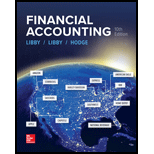
1.
Compute the turnover, liquidity, and solvency ratios for the current year of Company T.
1.
Answer to Problem 4AP
Turnover, liquidity, and solvency ratios for the current year of Company T are as follows:
| Ratios or percentages | Result |
| Turnover Ratios | |
| Total asset turnover | 0.55 |
| Fixed asset turnover | 1.10 |
| Receivable turnover ratio | 1.59 |
| Inventory turnover ratio | 1.65 |
| Liquidity Ratios | |
| 2.59 | |
| Quick ratio | 2.01 |
| Cash ratio | 1.15 |
| Solvency Ratios | |
| Debt-to-equity ratio | 0.67 |
| Cash coverage ratio | 3.84 |
| Times interest earned ratio | 5.50 |
Table (1)
Explanation of Solution
Determine the ratios of Company T as given below:
| Ratios | Formula | Calculation | Result | |
| Turnover Ratios | ||||
| Total asset turnover | 0.55 | |||
| Fixed asset turnover | 1.10 | |||
| Receivable turnover ratio | 1.59 | |||
| Inventory turnover ratio | 1.65 | |||
| Liquidity Ratios | ||||
| Current ratio | 2.59 | |||
| Quick ratio | 2.01 | |||
| Cash ratio | 1.15 | |||
| Solvency Ratios | ||||
| Debt-to-equity ratio | 0.67 | |||
| Cash coverage ratio | 3.84 | |||
| Times interest earned ratio | 5.50 | |||
Table (2)
Working Note 1: Determine the amount of average total assets:
Working Note 2: Determine the amount of average net fixed assets.
Working Note 3: Determine the amount of net credit sales.
Working Note 4: Determine the amount of average net receivables.
Working Note 5: Determine the amount of average inventory.
Working Note 6: Determine the amount of current assets.
Working Note 7: Determine the amount of current liabilities.
Working Note 8: Determine the amount of quick assets.
Working Note 9: Determine the amount of total liabilities.
Working Note 10: Determine the amount of total stockholders’ equity.
2.
Write a comment on the turnover ratios for the current year of Company T.
2.
Explanation of Solution
From Table (1), the results reveal that the average collection period and the average days to sell inventory is very long. Company T takes 229.56 days
Want to see more full solutions like this?
Chapter 13 Solutions
Financial Accounting

 AccountingAccountingISBN:9781337272094Author:WARREN, Carl S., Reeve, James M., Duchac, Jonathan E.Publisher:Cengage Learning,
AccountingAccountingISBN:9781337272094Author:WARREN, Carl S., Reeve, James M., Duchac, Jonathan E.Publisher:Cengage Learning, Accounting Information SystemsAccountingISBN:9781337619202Author:Hall, James A.Publisher:Cengage Learning,
Accounting Information SystemsAccountingISBN:9781337619202Author:Hall, James A.Publisher:Cengage Learning, Horngren's Cost Accounting: A Managerial Emphasis...AccountingISBN:9780134475585Author:Srikant M. Datar, Madhav V. RajanPublisher:PEARSON
Horngren's Cost Accounting: A Managerial Emphasis...AccountingISBN:9780134475585Author:Srikant M. Datar, Madhav V. RajanPublisher:PEARSON Intermediate AccountingAccountingISBN:9781259722660Author:J. David Spiceland, Mark W. Nelson, Wayne M ThomasPublisher:McGraw-Hill Education
Intermediate AccountingAccountingISBN:9781259722660Author:J. David Spiceland, Mark W. Nelson, Wayne M ThomasPublisher:McGraw-Hill Education Financial and Managerial AccountingAccountingISBN:9781259726705Author:John J Wild, Ken W. Shaw, Barbara Chiappetta Fundamental Accounting PrinciplesPublisher:McGraw-Hill Education
Financial and Managerial AccountingAccountingISBN:9781259726705Author:John J Wild, Ken W. Shaw, Barbara Chiappetta Fundamental Accounting PrinciplesPublisher:McGraw-Hill Education





